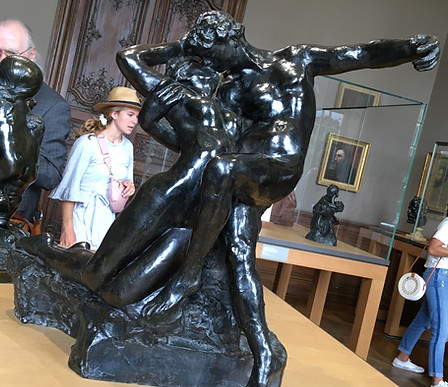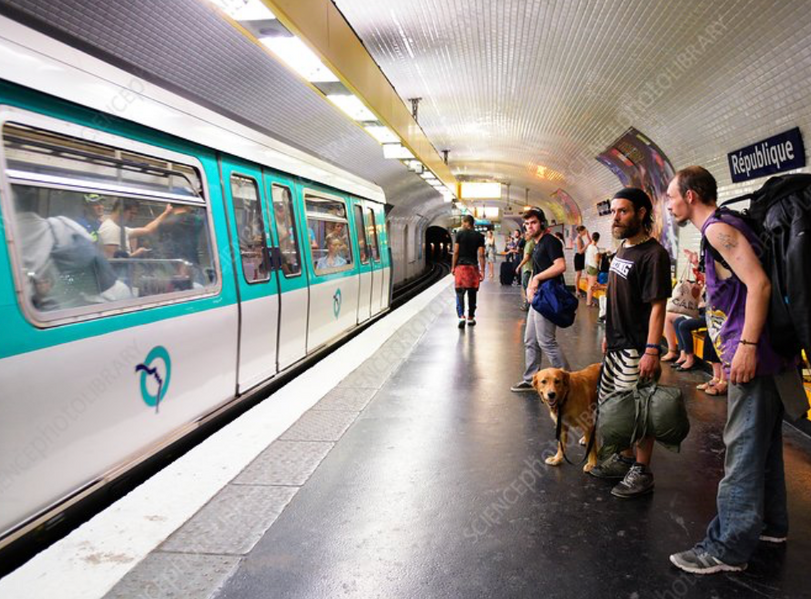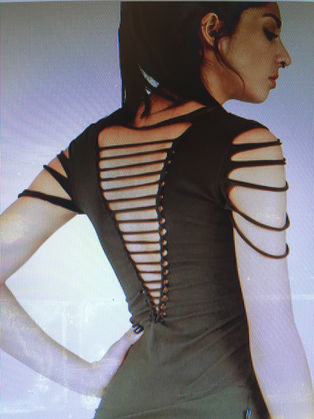.Cynthia DuFault.
Associate Professor
(9/1/2022)
Movement Vocabulary Research
My newest work, Last Stop was derived from my recent travels through Europe and consequently learning the secret language of train stations. As multiple languages enveloped crowds of people, one can easily become hyperconscious of the subtle secrets humans both hide and reveal. (See image examples below).
05. Continued Growth
Creative research/COLLABORATION abroad
Paris
CHOREOGRAPHIC RESEARCH IN PARIS
AUGUST 2019
Overview
The concept of creating a dance work means you are the author, the inventor, and the designer. It requires as much forethought, planning, research, analysis, and invention as any profession in the arts and sciences. Like these fields, it is created through using meaning, intent, and the principles of structure and design. Though, like only some of these disciplines, dance is the physical expression of an idea developed through a process of research, inquiry, and movement discovery. However, unlike any other, dance is the art of representing creative self-expression through the medium of human movement, and the essence of dance is to feel, create, compose, interpret, perform, and respond. It is arguably, the oldest art form, because dance expresses what words can not.
“Dance is the only art in which we ourselves are the stuff of which it is made.”
– Ted Shawn
The art of making dances is best described by Doris Humphrey – it is the art of capturing and creating "moving expressions." Many times, choreographers don't know when their next great idea will arrive. Who does? I knew that I had the up-and-coming task of creating a new dance work and was hoping that I would gain inspiration from a trip to Paris. Seriously, who wouldn't be inspired by Paris? I prepared to do what any good tourist would do and take plenty of photos and video footage as well as take along a travel journal to jot down any themes or movement ideas that came to mind along the way.
And so, here's how it all unfolded...
I began to think, do all human beings think in a similar way regardless of the language they use to convey their thoughts? Does the language individuals speak affect the way we think? I learned that this question has actually entertained philosophers, psychologists, linguists, neuroscientists, and many others for centuries, and I will leave it at ...everyone has strong opinions about it.
What about body language and movement? While there are many gestures and expressions that differ from culture to culture, is there a universal body language recognized and rightly understood by the majority of the world's population? Can what I witnessed visually at the European train stations, without auditory suggestions, be enough of a means to translate body language? Has body language helped me pick up on unspoken issues or feelings in others. Can I also use body language in a positive way to add strength to my choreography? Yes, of course.
“The truest expression of a people is in its dances…Bodies never lie.”
– Agnes De Mille
Visiting The Musée Rodin
The idea of the expressive body in motion got me thinking about if I could stop that motion and see what it looks like in a three dimensional way, I could get an even better idea of the translation of body language.
The exhibition in Paris' Musée Rodin on the left bank of the Seine explores the broad legacy of French sculptor Auguste Rodin over 100 years after his death. This atypical avant-garde artist has paved the way as artists and collectors came to Paris because of him and have studied and emulated his work since his popularity struck around the turn of the 20th century.



The exhibition in Paris' Musée Rodin on the left bank of the Seine explores the broad legacy of French sculptor Auguste Rodin over 100 years after his death. This atypical avant-garde artist has paved the way as artists and collectors came to Paris because of him and have studied and emulated his work since his popularity struck around the turn of the 20th century.
Rodin was fascinated by all forms of dance, and from the 1890s onward, the art of dance was transformed, with new experiences revolutionizing ballet and cultural forms of dance. His interest in these innovations led him to meet such exceptional dance figures as Loïe Fuller and Isadora Duncan. Dance and sculpture both were exploring the possibilities of the human body.
"Miss Duncan literally unified life in dance," according to Rodin.
"She makes dance attuned to line, and she is as unaffected as
classical antiquity, which is the synonym of beauty. Suppleness,
emotion, these great qualities which are the soul of dance itself:
It is art, complete and free." – Auguste Rodin


I have learned a great deal about gravity and the relationship with gravity because of Rodin's art. My fascination began in college thirty years ago, as I looked to his art to find a new movement vocabulary while working on my masters thesis. Attending the Musée Rodin in August 2019 and seeing so many of his sculptures and drawings, there, in Paris, reminded me of why I initially studied his work years ago. Whether it's spinning or leaping or releasing onto the floor, Rodin captured it in its most natural sense. The fact that the body is part of nature gives so much to the gestures and what we call dance. Like the body and dance, Rodin's references also come from nature. "He says it himself:
"The teacher of the artist is nature.' The best thing an artist can
do is go into the world with eyes open and learn from nature."
– Auguste Rodin



I noticed that many of Rodin's art at the Musée Rodin center around movements resembling how I see dance. The sculptors and drawing alike use assemblages to convey the body’s tensions while off its axis, combining affects of void and solid, balance and imbalance. It demonstrates, artwork after artwork, the life force of the body, its energy, strength, and equilibrium – just as dance explores the body’s relationship with space, time, and weight through extension, flexibility, and freedom of line.


I was like a kid in a candy store, trying to take in as much as one afternoon would allow. Furthermore, it brought me all the more closer to Rodin knowing that the museum, where I traveled from room to room, was also where he once lived. I finished the afternoon in the beautiful gardens having a lovely little lunch of baguette, fromage, and rosé.


Taking in all that I experienced, I was able to develop a movement consciousness, allowing me to deconstruct and reconstruct movement in such a way as to capture the emotional unknown that lies beyond foreign words. (See in this early rehearsal process some of the results of the train stations and Rodin's influence.)
Sound Scoring the Audio
With a musical score wrapped around the ideas of composer Divan Gattamorta,I built a sound collage by mixing and
manipulating audio tracks of train station recordings, station voices, musicians performing at the stations, and homemade sound effects from the kitchen, while also building from
percussion and piano tracks. In the recording (to the right), see if you can identify these elements?
Last Stop Audio Recording
Conception Behind the Costume Design
Paris is renowned as the world fashion capital, and spread throughout the city are many fabulous fashion boutiques as well as the mega designer headquarters like Chanel. For the purposes of Last Stop, Paris urban fashion was what drew my attention the most.
The word urban is thrown around so casually nowadays that it is hard to determine what it actually means and whether it means the same thing in every context.
The Oxford Learner's Dictionary defines it as, "connected with a town or city." Okay so, what does the word urban actually mean? And more importantly, what does it mean in the context of fashion?
In Paris, and most likely in many fashion capitals, the word urban has been taken to mean the culture that arises in towns and cities as a result of the fusion of different cultures, lifestyles, ideas, and attitudes. Urban Fashion can be seen as edgy and reflects lifestyle, attitudes, and individuality. Unlike mainstream fashion or dance costumes –for that matter, anything goes in the urban fashion world and designers are not pressured into conforming to trends. Inspiration for urban lifestyle trends comes not from the media but from those trendsetters: those individuals within the scene that lead; those who turn ideas into action; and those who refuse to follow conventions. These are the people who direct the urban scene.
This was definitely the direction I was going, as I was looking for ways to show my students as individuals while also representing a sense of unity. Paris urban fashion complemented the attitudes I was looking for in modern city hustle and bustle and even worldly culture, juxtaposing the historical, romantic legacy of Paris. Now, can I also achieve this through movement?
Below are some of the designs used for Last Stop.
A cast of twenty SUNY Potsdam dancers filled the stage and performed live at the February 2020 Faculty Dance Concert. I would like to say that the sixteen-minute work had varying degrees of juxtapositions and collages, but it did not resemble a random cutting and pasting toward some grand design. I feel that it was more coherently driven by a frame, combining different and new pathways for the body to move – both charged moments followed by quieter sections.
The movement also shifts with ebbs and flows. All twenty dancers convene with phrasing, featuring occasional flourishes and dynamic locomotor motion that might reference rush hour in the train station. All at once, the scene cuts into smaller groupings and slows down into more lush, organic movement. Then, the ensemble reconvenes. A small group moves stubbornly grounded through floor work, and all of a sudden, five more people leap to the center. This is followed by other dancers threading through, indiscriminately sculpting the space around them.
I feel that the willingness to allow the choreography (or the movement ideas) to juxtapose, leads to what I would call multiple realities. You realize that in Last Stop, you’re looking at many people's worlds in a collage of physical motion – like what I saw in the busy train stations.
By the time the work went to the stage to be performed, I felt as though I almost recaptured my European train station experience. In my travels, I also recorded train station video footage to create a collage that could become a moving backdrop (See a few examples to the left) . I have created dance works with video backdrops in the past, and I feel it gives dimension and an additional visual perspective.
It turned out that the stage projector in the PAC Proscenium was without the proper lens to project full-sized on the cyclorama, and unfortunately, the work was presented without the video collage.
For many years, my research has been working with technology and dance on and off stage (see my 2019 TEDx) as well as teaching the subject ‘dance on camera’ and most recently, ‘media dance’ - the art of taking the digital/virtual element of media and applying it to the craft of dance-making.
After not being fully satisfied with the staged version of Last Stop, I decided to do a new hybrid version. True to my original vision, I wished to add more of a visual metaphor to the work, incorporating the video footage. Initially, I filmed my dancers performing the work on stage during the dress rehearsals, and I had the idea to combine the train station video footage with the video of the dancers performing on stage.
When exploring this intersection between choreography and video, I created dancers who were superimposed within the various European backgrounds. The work became the response to the evocative space that is modern Europe interwoven within an imaginary dreamscape that takes inspiration from the rich layers of cultural history, the connotations, and possibilities that unite the global cities of Paris as well as Copenhagen, Cologne, and London.
With the pandemic on the verge of hitting, preserving the work this way ended up beneficial. As the stage version of Last Stop was scheduled to be revised during the summer at Perry-Mansfield Performing Arts School in Colorado, it was canceled because of the pandemic. Instead, the video version was accepted into the 22nd Annual Las Vegas Dance in the Desert ‘Virtual’ Festival. The SUNY students were very pleased to learn that they were a part of the festival and performed in Vegas.
View the media dance work: Last Stop



























